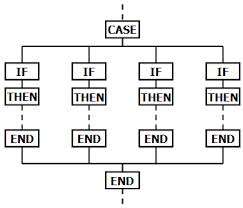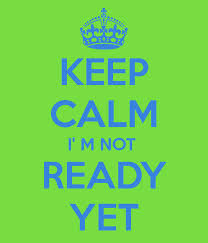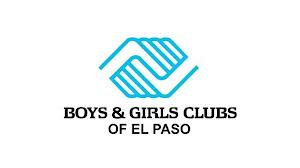 For those of you following the last few blog posts, you know that I’m reading “The Marshmallow Test: Mastering Self-Control“ written by researcher Walter Mischel, which is a book about human behavior, delayed reward and resisting temptation. There are tons of organizational development lessons throughout the book, and there is so much that non-profit organizations can learn from this research.
For those of you following the last few blog posts, you know that I’m reading “The Marshmallow Test: Mastering Self-Control“ written by researcher Walter Mischel, which is a book about human behavior, delayed reward and resisting temptation. There are tons of organizational development lessons throughout the book, and there is so much that non-profit organizations can learn from this research.
For example, chapter five — “The Best-Laid Plans” — looks at a concept researchers labeled “hot stimulus” (aka temptation), which is one important factor in the entire delayed reward equation at the root of the marshmallow test. In this chapter, they looked at strategies that children were asked to use in order to improve the amount of time they spent on a project before caving in to a distraction or reward.
One of the strategies that seems to work well is creating “If-Then Plans.” The way this works is when a child is presented with a situation like a foreseeable distraction or temptation, they automatically do something that helps insert their self-control. Here is how Mischel talks about this phenomenon on page 98:
“With practice, the desired action of an implementation plan becomes initiated automatically when the relevant situation cues occur:
- When the clock hits 5 pm, I will read my textbook;
- I will start writing the paper the day after Christmas;
- When the dessert menu is served, I will not order chocolate cake;
- Whenever the distraction arises, I will ignore it.
And implementation plans work not just when the IF is in the external environment (when the alarm rings, when I enter the bar) but also when the cue is your internal state (when I’m craving something, when I’m bored, when I’m angry).
When I read this chapter, it got me thinking about how powerful IF-THEN planning can be and has been for countless numbers of smart non-profit organizations. The following are just a few examples:
- IF our executive director resigns or leaves some day, then we will a) hire an interim executive director, b) form an executive search committee, etc.
- IF our largest funding source cuts or stops funding our agency, then we will cut XYZ from the operating budget and immediately access X% of funding from our reserve funds and raise Y% of funding from a special appeal to select major gifts donors.
- IF our capital campaign feasibility study comes back with news that we can raise less than expected, then we will scale the building project back in the following ways: X, Y, and Z.
Developing IF-THEN plans for your agency on a variety of different issues can help your organization get through tough situations like executive turnover. More importantly, it will help you avoid distracting shiny-object-types-of-issues that are endemic to most crisis situations.
Has your agency developed a succession plan or anything else that qualifies as an “IF-THEN” plan or strategy? Please scroll down and share your thoughts and experiences in the comment box below. I would love to hear about your successes and your lessons learned.
Here’s to your health!
Erik Anderson
Founder & President, The Healthy Non-Profit LLC
www.thehealthynonprofit.com
erik@thehealthynonprofit.com
http://twitter.com/#!/eanderson847
http://www.facebook.com/eanderson847
http://www.linkedin.com/in/erikanderson847

 As I explained in last week’s post titled “
As I explained in last week’s post titled “ I believe the answer is as simple as evaluating what “The Ant” would do if they were a member of your board of directors.
I believe the answer is as simple as evaluating what “The Ant” would do if they were a member of your board of directors. After spending a nice long Labor Day weekend in Michigan at a friend’s summer cottage on Saginaw Bay, I am now faced (as are you) with the long slide towards the end of the year. Not only can I not wear white clothing now that Labor Day has come and gone, but my fundraising friends should be starting to engage board, staff and fundraising volunteers in developing their agency’s written 2015 resource development plan.
After spending a nice long Labor Day weekend in Michigan at a friend’s summer cottage on Saginaw Bay, I am now faced (as are you) with the long slide towards the end of the year. Not only can I not wear white clothing now that Labor Day has come and gone, but my fundraising friends should be starting to engage board, staff and fundraising volunteers in developing their agency’s written 2015 resource development plan. Having two degrees in planning, I tend to get overly excited about developing plans, and some of my past resource development plans have been 50 and 75 pages in length (Yeah, I have gotten carried away). Those plans included elements such as:
Having two degrees in planning, I tend to get overly excited about developing plans, and some of my past resource development plans have been 50 and 75 pages in length (Yeah, I have gotten carried away). Those plans included elements such as: Many years ago I traveled the Midwest region as an internal consultant working for a large national non-profit organization. For part of my time there, I worked with countless local affiliated organizations on planning and implementing an annual campaign focused on face-to-face solicitation strategy. Some agencies took to it like a duck to water, and others just struggled. Every once in a while (typically when I’m contemplating the origins of the universe), I think back to those days and wonder what the difference was between those two realities.
Many years ago I traveled the Midwest region as an internal consultant working for a large national non-profit organization. For part of my time there, I worked with countless local affiliated organizations on planning and implementing an annual campaign focused on face-to-face solicitation strategy. Some agencies took to it like a duck to water, and others just struggled. Every once in a while (typically when I’m contemplating the origins of the universe), I think back to those days and wonder what the difference was between those two realities. When they are in (or starting to slide into) financial crisis
When they are in (or starting to slide into) financial crisis My advice to those of you considering a strategic planning engagement is:
My advice to those of you considering a strategic planning engagement is: “I laughed at the Lorax, “You poor stupid guy!
“I laughed at the Lorax, “You poor stupid guy! So, I guess Dr. Seuss is right again . . . “Business is business!” It must just be a function of human nature, right? Because I see corporate America constantly expanding. I see the non-profit sector doing the same thing. And I may just get sick if I hear one more person rant about the expanding size of government on my television (I probably just need to learn how to use my remote and change the channel.)
So, I guess Dr. Seuss is right again . . . “Business is business!” It must just be a function of human nature, right? Because I see corporate America constantly expanding. I see the non-profit sector doing the same thing. And I may just get sick if I hear one more person rant about the expanding size of government on my television (I probably just need to learn how to use my remote and change the channel.) I know that many people look at this list and immediately reject it, but if Dr. Seuss is right and “Business is business! And business must grow” then change is inevitable inside of our organizations. And if change is inevitable, then why put on a blindfold and take the proverbal steering wheel of your organization?
I know that many people look at this list and immediately reject it, but if Dr. Seuss is right and “Business is business! And business must grow” then change is inevitable inside of our organizations. And if change is inevitable, then why put on a blindfold and take the proverbal steering wheel of your organization? Exercise: What seat(s) on the bus do you want to sit?
Exercise: What seat(s) on the bus do you want to sit? Tool: The Matrix Map
Tool: The Matrix Map
 “It all ties together,” explains Jaime. “The big challenge is creating a culture that appreciates and strives to create loyalty.”
“It all ties together,” explains Jaime. “The big challenge is creating a culture that appreciates and strives to create loyalty.” I always joke that I went to the School of Worst Case Scenarios, because when presented with any decision, I try to figure out the worst thing that could happen. It amuses my clients, yet it’s a helpful exercise. Once you know the worst case, you can roll of the dice, create a plan to avoid it or decide it’s not worth it.
I always joke that I went to the School of Worst Case Scenarios, because when presented with any decision, I try to figure out the worst thing that could happen. It amuses my clients, yet it’s a helpful exercise. Once you know the worst case, you can roll of the dice, create a plan to avoid it or decide it’s not worth it.


